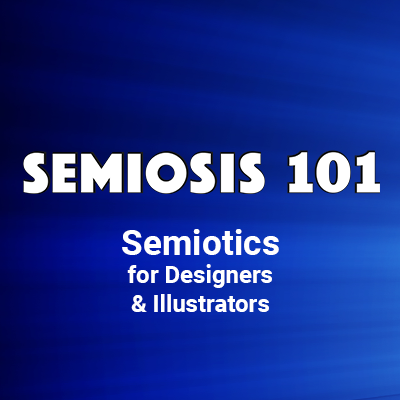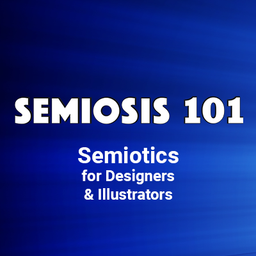BLOG 14: Semiotically Mediating the Latitude for Interpretation

Semiosis 101 - 5 minute semiotic read
How can you illustrators and designers control what your target audience will interpret from what they see? This blog post will answer that - semiotically speaking.
Just because you believe your design or illustration is visually communicating THIS* actually means THAT other thing (*insert your concept here) your audience will make the SAME interpretation. That is first-order thinking without considering you target audience’s reference points, their lived experiences, their lifeworlds which influence how the audience interprets. However, Semiosis can help you visually communicate to your target audience your intended messaging.
Peircean pragmatic semiotic sign-action is a way to semiotically structure the meaning-bearing elements in your illustration’s or design’s visual language. What this means to you is that pragmatic semiotic theory can help you
mediate meaning while controlling the audience’s latitude to interpret your intended meaning. Semiosis semiotic structures how you represent the intended concept to lead to the desired interpretation, instead of away from the concept. This gives you semiotic control of the latitude for audience interpretation and it begins with your ideation and centring your audience within your idea generation.
The act of representation in design or illustration is not passive. It demands interpretation. As sentient beings, humanity has evolved a perceptual awareness to understand connotated meaning, that things can be understood as signs for other things. Whether these signs are natural or artificial.[1] As a species, we engage in perceptual processes which are culturally specific to the context a sign is seen in.[2] In different contexts perceived representation can be interpreted in different ways.
While Semiosis 101 is focused solely on artificial semiotic signs, let me now switch to a natural semiotic sign. What do first think of when you observe smoke? Picture it in your mind’s eye. Smoke is a natural effect of fire. As a natural sign smoke can be interpreted instantly as an indication of the presence of a fire.
This smoke may represent a cosy homecoming to a warm hearth and home when seen from a distance. Smoke could in turn represent the presence of burning and danger, or the presence of a tobacco smoker nearby, or food processing, etc. etc. The socio-cultural context changes the interpretation of the smoke as a sign for something more than the denoted “fire.”
Previous encounters of “smoke” in the lived experiences of an audience will affect who they project their interpreted meaning when they next see “smoke” in a new context. They will examine the qualities of the new encounter of “smoke” and subconsciously connect those qualities to a fresh interpretation. This interpretation will be based on how the present representation of “smoke” resembles what the audience already understand “smoke” indicates.
This is a natural example of a semiotic sign’s representation and interpretation. However, this example is also relevant to any artificial sign too. The form the representation takes is obviously different, but the reaction to it of the human is the same. Humans consult their lifeworlds to interpret new visual encounters.
The audience’s prior lived experiences comprise of previous socio-cultural reference points from which they will form interpretations of new encounters. Those prior reference points are subconsciously projected onto your aesthetic’s visual language.
If the semiotic representations you’ve relied on in your aesthetic’s visual language corresponds with the target audience’s lifeworlds they will understand your references. If not, you may miscommunicate the intended concept. The semiotic mediation of meaning happens in small perceptual helical cycles of interpretation from the representation of the concept. Mediation incrementally builds the audience’s confidence and restricts their latitude to misinterpret.
From the instant hit of possible meaning based on familiar qualities and resemblance, the audience’s understanding of what is intentionally being visually communicated is semiotically structured. The sign-action mediates the audience through the aesthetic, beyond the shallow denotative level of representation (THIS is THIS), in small subconscious perceptual jumps in understanding, to reveal deeper meaning in your aesthetic.
With that revealed meaning, interpretations can become more generalised in the lived experience of the audience. Once they perceptually resolve a general agreement that when they see certain visual elements, in certain a socio-cultural context, it is meant as a proxy for your intended concept. Check out the Semiosis 101 Lifeworld playlist on YouTube and in my 2026 Semiotics for Designers and Illustrators book.
[1] Eco, U. (1976) A Theory of Semiotics. Bloomington: Indiana University Press, p11
[2] Malafouris, L. (2016) How Things Shape the Mind: A Theory of Material Engagement. Cambridge M.A.: MIT Press Books, p238





